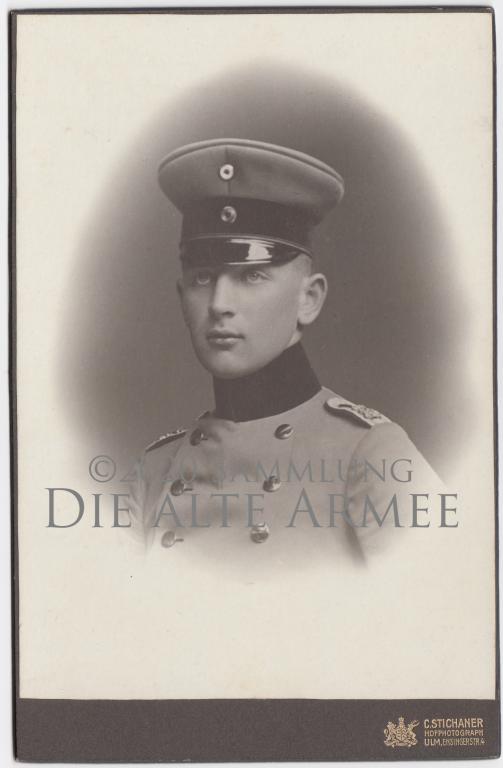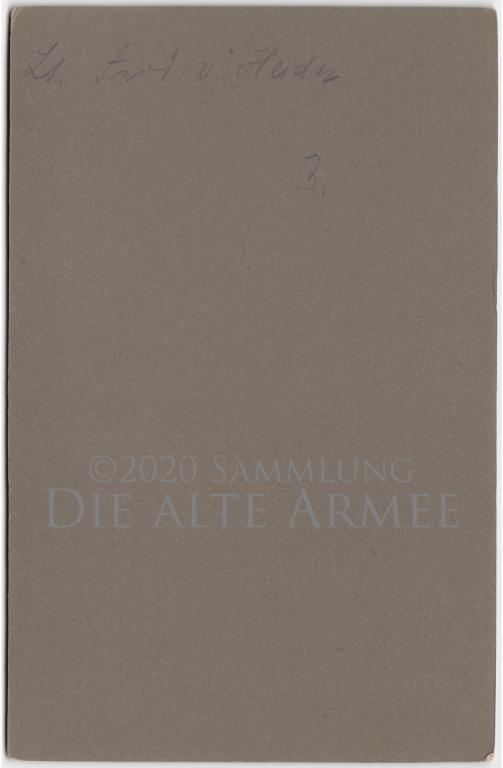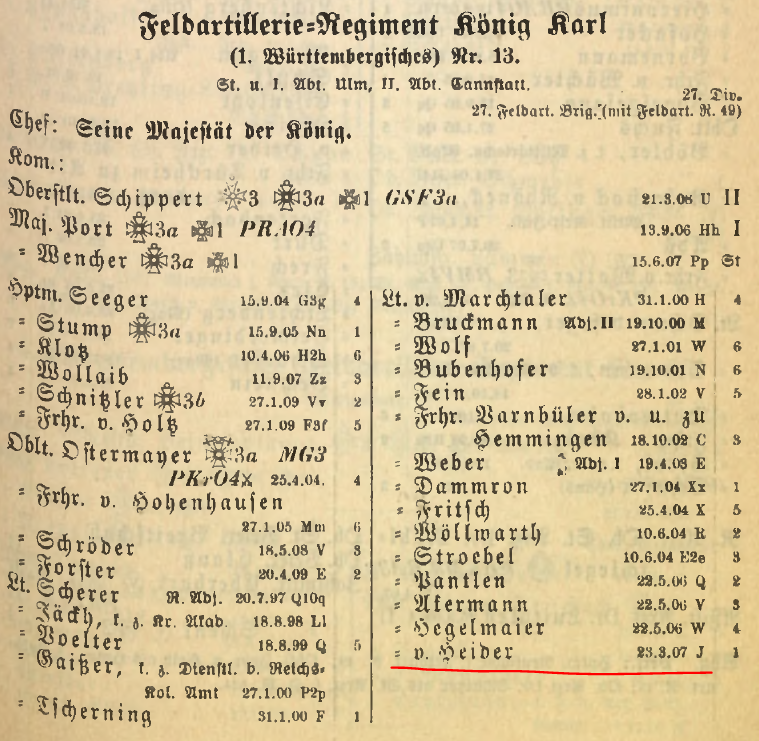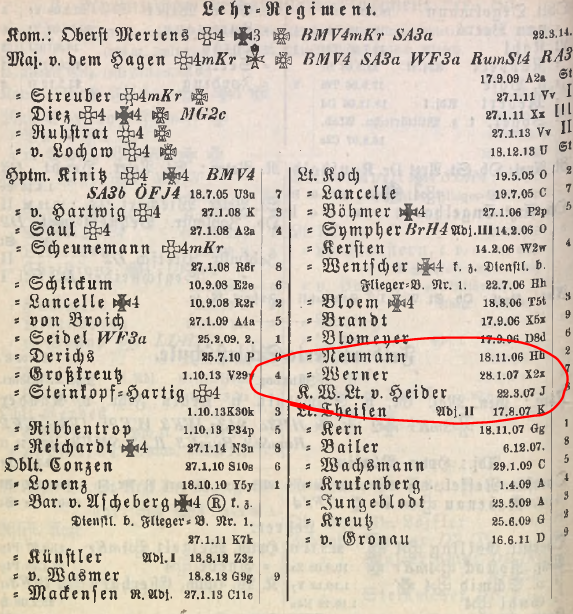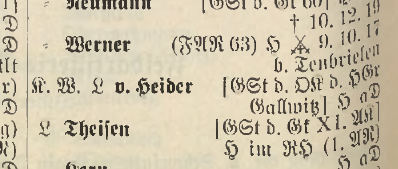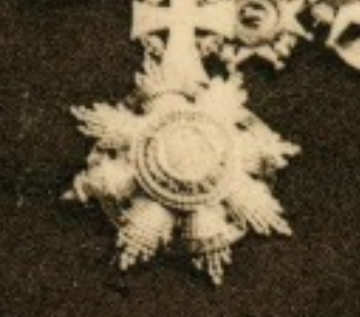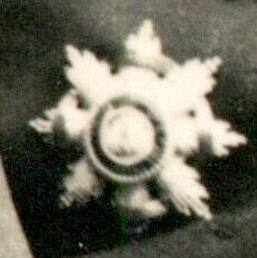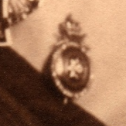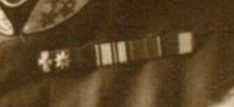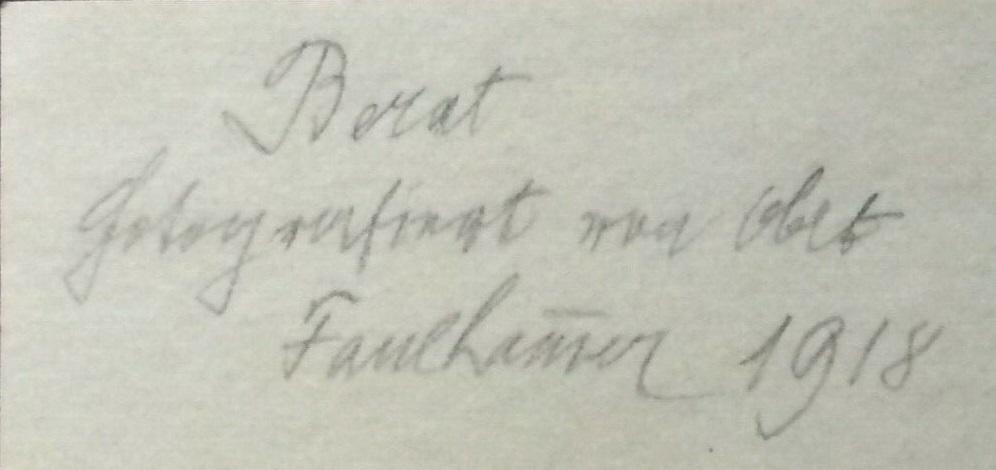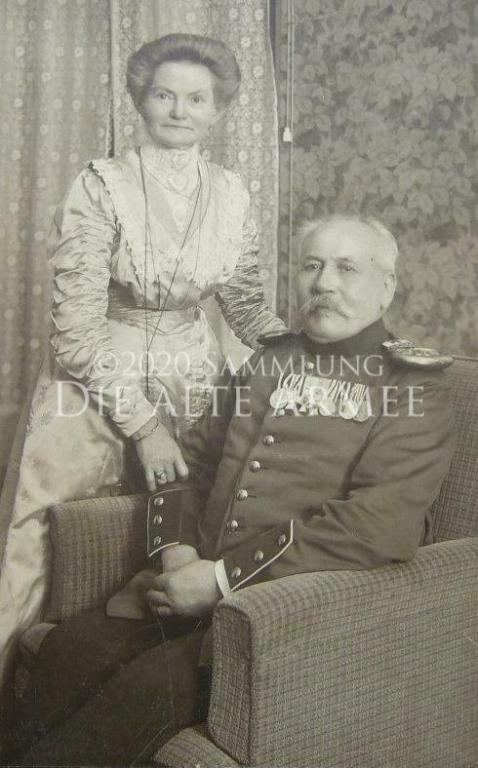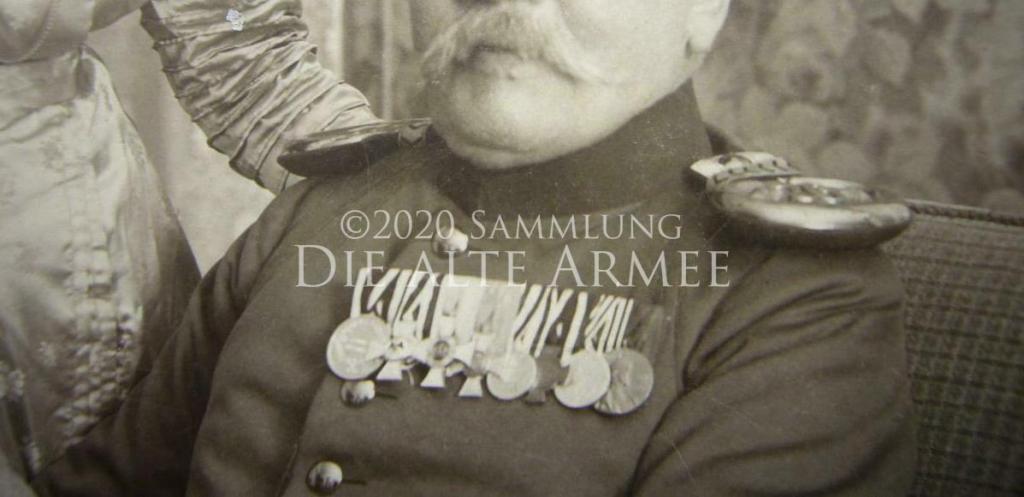-
Posts
359 -
Joined
-
Last visited
Content Type
Profiles
Forums
Blogs
Gallery
Events
Store
Everything posted by Utgardloki
-
I have this photograph in my collection. On the Backside I read: "Lt. Ferd. v Heider" (Leutnant Ferdinand von Heider) The dealer I bought in from assigned it to Feldartillerie-Regiment „König Karl“ (1. Württembergisches) Nr. 13 In the 1909 ranklist I found a v. Heider in this regiment: (Side question: What do those letters beside the dates mean?) In the 1914 ranklist it can be seen he transferred to the Lehr-Regiment of the Feldartellerie-Schießschule In the Ehrenrangliste from 1926 one can read he was later at Generalstab des OK der Heeresgruppe Gallwitz and ended the war as Hauptmann außer Dienst? I found also another v. Heider in the FAR Nr. 29 who might have been his brother? Is there any more info that can be found out? I wonder what awards he received during the war and what he did later and if he maybe was reactivated in WW2?
-
Some things I found interesting on the pictures of Ernst August: The gartered star - I remember his MMThO being sold at Thies, does anyone know something about this star? What is this decoration - I don't think I have seen it before I really like the ribbon bar he's wearing - especially the miniature devices on it, there seems to be a small Maria Therese cross to be on the first ribbon
-
Very nice ... I saw some british museum pieces of medals with all battle clasps ... but never a german one (or "the" german one, as I believe there isn't any german medal with a comparable number of clasps ) this clasp thing seems to be a british thing, any information about its origins? Is it known if the 1870-71 medal was inspired by the british medal system?
-
I thought it could be a napoleonic veteran on a gatharing in 1851 (year written on backside)... the second picture you posted is easier to make out as an reenactor. The genuine photo is taken later and shows a contemporary Leib Husar (not an old veteran or reenactor). Are there any known definitely genuine pictures of napoleonic veterans wearing their old uniforms... ?
-
I am 95% sure it is "Großpapa", I am in my twenties and feel the same, I had to learn it myself...would be nice if at least it would be learned during art class.
-
The "o" can be open on top if not done neatly
-
Additionally to mention: Reichsfreiherr was never an official title. It was just used, as stated above, by houses lifted into the Freiherrenstand during the HRR, cause it was more prestigious than a later title. Officially they are also just Freiherrn. You can also use the term Reichsfreiherrn when you talk about the group of Freiherrn which held a reichsunmittelbares (imperial immediate) territory (analog to Reichsfürsten, Reichsgrafen and Reichsritter) if you wish to distinguish them from the immediate imperial knights without the title Freiherr.
-
I think fürstliche Häuser (princely houses) with "princes" as family members, despite the head are only those houses which held a "reichsunmittelbares" territory in the holy roman empire (which was more or less a sovereign state with only the emperor above him, who had only limited power over these territories)or stayed sovereign (Fürst von Lippe etc.). I think later created titular "Fürsten" (Britain for example has despite the prince of wales (?), Duchy of Cornwall(?) only titular titles?) aren't existing with family descendent as princes. I would be happy to hear of a counter example. The german / holy roman rank system is very very complicated. I think you have to spend very much time into it to understand every facette. There were also the "Reichsritter" (imperial knights) and even Reichsdörfer (imperial villages) with super small semi-sovereign territories.
-
I recently acquired this nice picture of a MEZ 2nd class recipient. He appears to be a leutnant, oberleutnant or hauptmann. I wasn't able to read what's on the epauletts. It was taken in Frankfurt an der Oder. He's wearing: MEZ 2nd class Red Eagle order 4th class (maybe 3rd) crown order 3rd class (maybe 4th) ? long service maybe? ??? 1866 medal ??? ??? centenary
-
That most likely was the reason for the fraternity to choose that color. Indeed this is a "sash" to be worn as You did. The silver lining at the edge of the ribbon is called "Perkussion", it can be silver or gold. When wearing black or white tie there are also narrower ribbons to use, but I don't know if that's the case with your "miniature ribbons" The typical width is 27 mm but it can differ. The one for black tie is narrower. There is no medal suspended from them, its just the ribbon. In Vienna you can see those guys quite frequently. The fraternities (at least the german-national ones) are quite controversial in Austria and often in the media.



